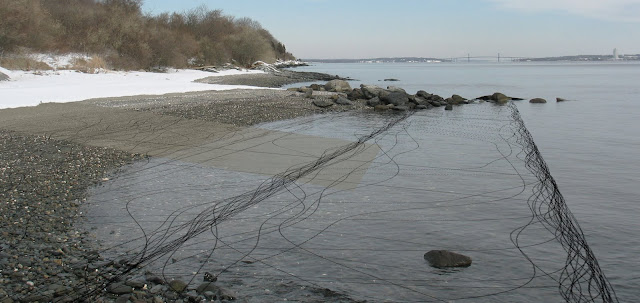introduction
In order to begin framing the dynamic edge, a lens for reading boundary conditions must be established. Only once the perception of the boundary has been framed can physical interventions be designed. The lens with which to read the dynamic condition of the coast is based on five concepts: fluidity, natural processes, terrain, edge, and frame.
As an aqueous substance as well as embodying the principle of flexibility, the term fluid takes on compound roles in my work. Water specifically is viewed through multiple lenses as a material, concept, surface, culture, icon, system, and/or resource. Fluid environments are critical in the landscape both in terms of the presence of water as the lifeblood of living things, and in terms of having adaptable qualities to meet changing conditions without being compromised. If landscapes are designed to anticipate change, the likelihood of retaining elements essential to that place is much greater. Considering the materiality of water and how it reacts with or against other materials is critical to this.
Investigating the actions and reactions of fluid landscapes focuses my work on natural processes. Through mapping the impression of water upon landscape, ecologies, and cultures, active conditions are revealed. Often scientific processes focus these investigations, through the use of site-specific controls and variables. Time becomes an element of utmost importance to tracking the changes and exchanges within and between systems.
The fluid landscape can be considered as a figure-ground relationship in which the ground is literally terrain. Visualizing this relationship in section is critical. Terrain in this regard does not stop at the zero contour, but continues below the water’s surface so as to connect the perceived landscape to its greater context. Terrain has a specific, continuous relationship between each and every contour. By tracing this line between contours, the confines of solid ground can be defined.
This edge condition between figure and ground, or water and terrain, is not static however. At precise moments in time a rising or falling tide can be measured against a specific contour as a horizontal mark, or such a tide may leave a trace in a wrack line that will remain until the next tide reaches that line of demarcation. But the concept of edge defined in relationship to natural processes and time is spatial and dynamic. It is a border within which two or more things meet, and is capable of shifting as its context or those elements change.
Expanding from the edge itself to a view that includes context, a frame can be employed to understand the factors that affect the edge condition. Considering frame specifically in terms of a framework, a degree of gradation or flexibility within a greater set method is implied. In the same way edge is defined, a frame is not static but is imbued with the ability to adapt to changing conditions. A frame also acts as a lens, and through the act of framing a site will be shaped by both physical and cultural boundaries. A particular frame may expand and contract to consider various scales of context, from watershed to the fluid zero contour within the watershed, to small-scale observations or installations.
Subscribe to:
Comments (Atom)

